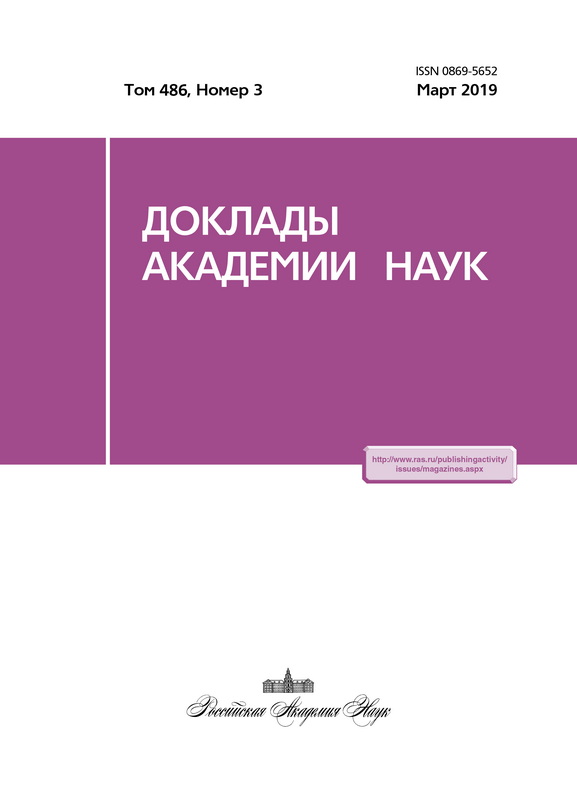Bacterial film disintegration with electrochemically reduced water
- Authors: Pogorelov A.G.1, Kuznetsov A.L.1, Panait A.I.1, Pogorelova M.A.1, Suvorov O.A.1, Ivanitskii G.R.1
-
Affiliations:
- Institute of Theoretical and Experimental Biophysics of the Russian Academy of Sciences
- Issue: Vol 486, No 3 (2019)
- Pages: 395-397
- Section: Biochemistry, biophysics, molecular biology
- URL: https://journals.eco-vector.com/0869-5652/article/view/13529
- DOI: https://doi.org/10.31857/S0869-56524863395-397
- ID: 13529
Cite item
Abstract
This work aimed to study the fine structure of bacterial films grown on the inner tuber surface of flow reactor. Applying scanning electron microscopy (SEM) approaches, the detailed biofilm relief was visualized. The action of electrochemically reduced water (ERW) on the biofilm ultrastructure generated by the plankton form of E.coli and/or lacto bacteria was investigated. Treatments with an ERW solution were exhibited to destroy the biofilm organic polymer matrix and bacterial cells embedded in a matrix.
About the authors
A. G. Pogorelov
Institute of Theoretical and Experimental Biophysics of the Russian Academy of Sciences
Author for correspondence.
Email: agpogorelov@rambler.ru
Russian Federation, 3, Institutskaya street, Pushchino, Moscow Region, 142290
A. L. Kuznetsov
Institute of Theoretical and Experimental Biophysics of the Russian Academy of Sciences
Email: agpogorelov@rambler.ru
Russian Federation, 3, Institutskaya street, Pushchino, Moscow Region, 142290
A. I. Panait
Institute of Theoretical and Experimental Biophysics of the Russian Academy of Sciences
Email: agpogorelov@rambler.ru
Russian Federation, 3, Institutskaya street, Pushchino, Moscow Region, 142290
M. A. Pogorelova
Institute of Theoretical and Experimental Biophysics of the Russian Academy of Sciences
Email: agpogorelov@rambler.ru
Russian Federation, 3, Institutskaya street, Pushchino, Moscow Region, 142290
O. A. Suvorov
Institute of Theoretical and Experimental Biophysics of the Russian Academy of Sciences
Email: agpogorelov@rambler.ru
Russian Federation, 3, Institutskaya street, Pushchino, Moscow Region, 142290
G. R. Ivanitskii
Institute of Theoretical and Experimental Biophysics of the Russian Academy of Sciences
Email: agpogorelov@rambler.ru
Corresponding Member of the Russian Academy of Sciences
Russian Federation, 3, Institutskaya street, Pushchino, Moscow Region, 142290References
- Garrett T.R., Bhakoo M., Zhang Z. // Prog. Nat. Sci. 2008. V. 18. P. 1049-1056.
- Bakhir V.M., Pogorelov A.G. // Int. J. Pharm. Res. & Allied Sci. 2018. V. 7. P. 41-57.
- Shirtliff M.E., Mader J.T., Camper A.K. // Chem. Biol. 2000. V. 9. P. 859-871.
- Costerton J.W. // Int. J. Antimicrob. Agents. 1999. V. 11. P. 217-221.
- Bridier A., Briandet R., Thomas V., Dubois-Brissonnet F. // Biofouling. 2011. V. 27. P. 1017-1032.
- Nguyen D., Joshi-Datar A., Lepine F., Bauerle E., Olakanmi O., Beer K., McKay G., Siehnel R., Schafhauser J., Wang Y., Britigan B.E., Singh P.K. // Science. 2011. V. 334. P. 982-986.
- Drescher K., Shen Y., Bassler B.L., Stone H.A. // Proc. Natl. Acad. Sci. U.S.A.. 2013. V. 110. P. 4345-4350.
- D’Atanasio N., Capezzone de Joannon A., Mangano G., Meloni M., Giarratana N., Milanese C., Tongiani S. // Wounds. 2015. V. 27. P. 265-273.
- Cloete T.E., Thantsha M.S., Maluleke M.R., Kirkpatrick R. // J. Appl. Microbiol. 2009. V. 107. P. 379-384.
- Ludecke C., Jandt K.D., Siegismund D., Kujau M.J., Zang E., Rettenmayr M., Bossert J., Roth M. // PLoS One. 2014. V. 9. P. e84837-e84837.
- Crusz S.A., Popat R., Rybtke M.T., Cámara M., Givskov M., Tolker-Nielsen T., Diggle S.P., Williams P. // Biofouling. 2012. V. 28. P. 835-842.
- Rollet C., Gal L., Guzzo J. // FEMS Microbiol. Lett. 2009. V. 290. P. 135-142.
- Погорелов А.Г., Гаврилюк В.Б., Погорелова В.Н., Гаврилюк Б.К. // Клеточные технологии в биологии и медицине. 2012. № 3. С. 176-180.
- Погорелов А.Г., Чеботарь И.В., Погорелова В.Н. // Клеточные технологии в биологии и медицине. 2014. № 2. С. 133-136.
Supplementary files







